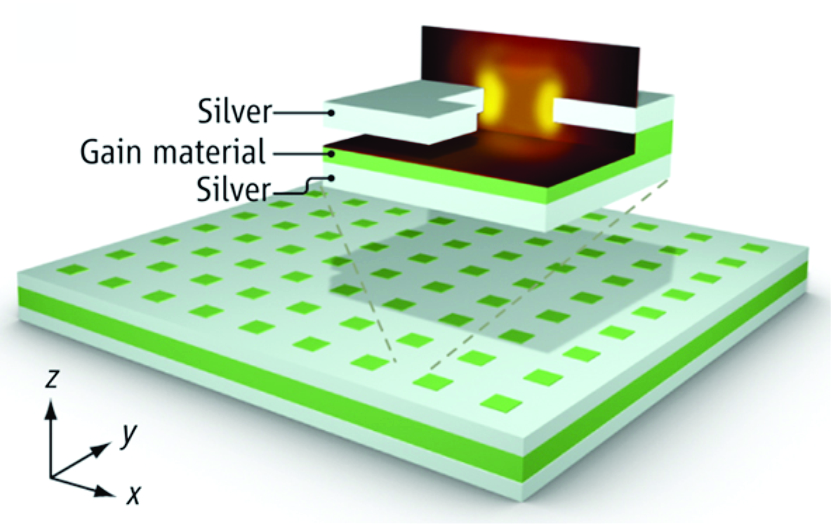
Photonic metamaterials allow for a range of exciting applications unattainable with ordinary dielectrics. However, the metallic nature of their meta-atoms may result in increased optical losses. Gain-enhanced metamaterials are a potential solution to this problem, but the conception of realistic, three-dimensional designs is a challenging task.
In this theme, starting from fundamental electrodynamic and quantum mechanical equations, we establish and deploy rigorous theoretical models (based on the Maxwell-Bloch equations) for the spatial and temporal interaction of lightwaves with free and bound electrons inside and around metallic (nano-) structures and gain media [2, 3]. The derived numerical frameworks allow us to self-consistently study the dynamics and impact of the coherent plasmon–gain interaction, nonlinear saturation, field enhancement, radiative damping and spatial dispersion.
Using numerical pump–probe experiments on gain-enhanced plasmonic nanostructures (with dye molecule inclusions), we investigate the build-up of the inversion profile and the formation of the plasmonic modes in a low-Q cavity. We aim at conceiving realistic structures exhibiting full loss compensation even in the negative-index regime, or metamaterial & nanophotonic lasing structures operating below the diffraction limit and with excellent figures-of-merit [1]. Our computational results provide a deep insight into how internal processes affect the overall optical properties of active photonic metamaterials and lasers, fostering new approaches to the design of practical, loss-compensated, active plasmonic or photonic nanostructures.